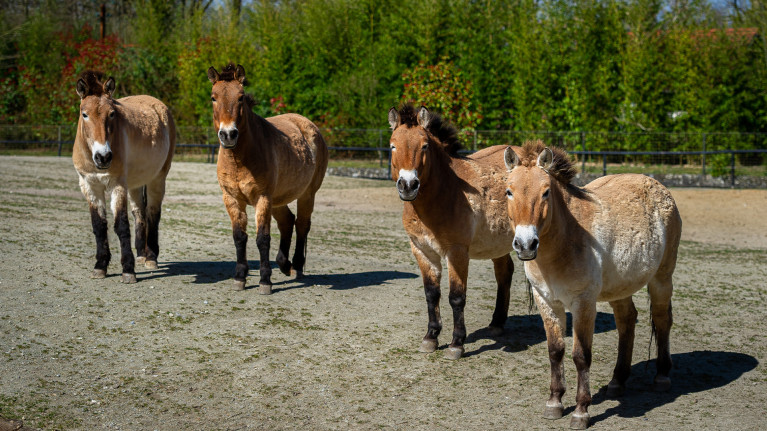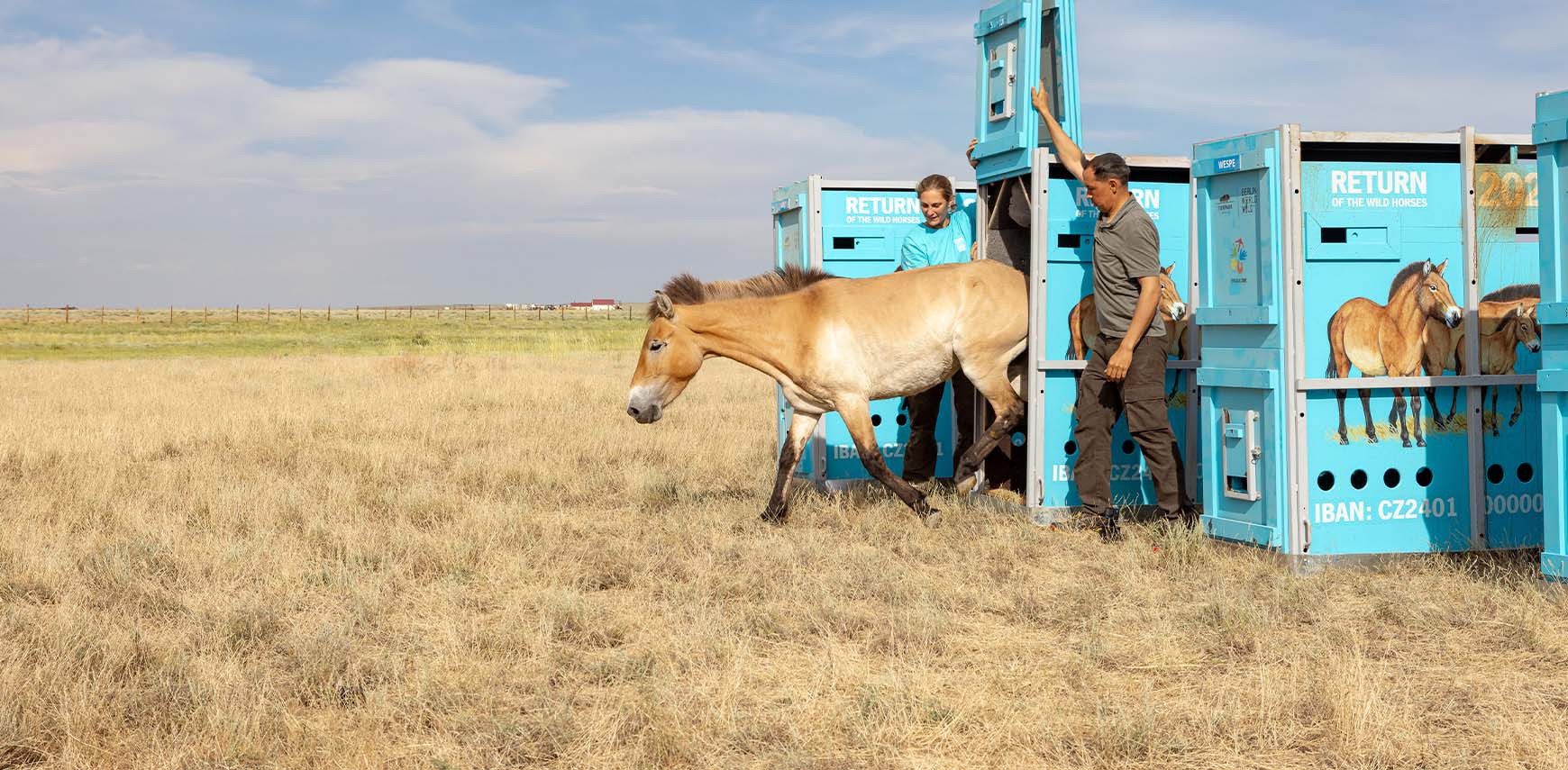Support for mythic Przewalski’s horses endangered by floods in Kazakhstan
After decades of preparation, the Przewalski’s horse – the last remaining species of wild horse on Earth – is returning to its original habitat in Central Kazakhstan, where it has been extinct since the 1960s. Despite this hopeful milestone, the horses’ return was abruptly jeopardised this spring when unprecedented flooding struck the reintroduction centre. The Uly Zhylanshik River rose by as much as five metres due to the sudden thawing of snow – a direct consequence of climate change. The infrastructure essential to the phased reintroduction of the horses sustained severe damage. Fortunately, both the horses and their caretakers remained unscathed.

Planckendael ZOO responded to the emergency appeal from colleagues at the Przewalski’s Horse Reintroduction Centre in Altyn Dala. Together with other partners in the European Ex-situ Programme (EEP), Planckendael ZOO decided to provide a one-off financial contribution. The funds will be used to build a new, safer enclosure outside of the flood zone, as well as a new hay barn.
“This project perfectly illustrates what our One Plan Approach (OPA) stands for: caring for species both within the walls of Planckendael ZOO and in their original habitat’, says Sarah Lafaut, curator of mammals at Antwerp ZOO and Planckendael ZOO. ‘We have had Przewalski’s horses in our collection ever since 1958, as part of the EEP breeding programme. This spring two young mares will even be joining us at Planckendael ZOO. In a crisis situation like this, standing in solidarity with our field partners is only logical.”

Primordial horses return to the steppe
The reintroduction project in Altyn Dala is a collaborative effort between several zoos and the Kazakh government. Last year, the first seven Przewalski’s horses arrived at the reintroduction centre. Here, they are gradually getting accustomed to the extreme climate, the open steppe and their new social group dynamics. They are also learning to find food and water independently – even during harsh winters. Soon, these animals will take their first steps towards a life of complete freedom.
Over the next four years, the plan is to introduce at least 35 horses to build a sustainable, genetically diverse population in the heart of Central Asia. Without a properly functioning reintroduction centre with fencing, food storage and safe resting places, however, this dream is at risk. The recent floods show that new investments are needed to safeguard the project against the challenges of climate change.
Committed to the future
Planckendael ZOO’s support for this initiative once again highlights the important role zoos play in global conservation. This involves not only by keeping and breeding endangered species and managing international breeding programmes, but also directly supporting conservation efforts in the wild – right through to the effective reintroduction of species.
“We are particularly proud that we, as a zoo, can help restore an iconic species to its original habitat", concludes Sarah. "These horses are living proof of what is possible when international collaboration, science and a passion for animals come together.”
Przewalski’s horses owe their name to the Russian soldier and explorer Nikolaj Przewalski, who was the first to ‘discover’ them in Mongolia in the late 19th century. The last confirmed sighting of this species in the wild dates back to around 1960. These wild horses once roamed across Central Asia but were driven to extinction in the wild due to hunting and loss of habitat. They survived in zoos – and now their offspring are returning to their roots in Kazakhstan. In Mongolia and China, the reintroduction has already proven a great success, with some 850 Przewalski’s horses now galloping freely once more!
All photos on this website are copyrighted and used with the permission of the respective photographers, including Miroslav Bobek and Vaclav Silha.

